Mount Everest climbers need a lot of specialized gear, including clothing, tools and supplies. This list is by no means comprehensive, but can give you an idea of the amount of equipment required. If you're going on a guided expedition, you should carefully check to see what they'll provide. You should also test all of your gear before the trip. Alpine Ascents and MountEverest.net have detailed lists of necessities and brand suggestions. Shoes Climbers need several pairs of socks, including trekking, wool and liner socks. They also need lightweight hiking boots as well as plastic, lined climbing boots. These should be large to give feet more room and reduce the risk of frostbite. Heating pads and wires are available to help keep boots warm, and depending on the type of boot, you may also need insulated overboots. Gaiters are included on some boots; otherwise you will need them to help keep your feet warm and dry.[Photo] Clothes Layering is important in choosing clothing. There is a great deal of variation in temperature between camps, depending on the weather and time of day, so you will need both lightweight and expedition-weight underwear. You'll also need a fleece or synthetic zip-up jacket, an expedition-weight down parka and a Gore-Tex shell jacket with a hood. Synthetic insulated pants, down pants and a pair of Gore-Tex shell pants (all windproof with full-separating side-zippers) are required. For your head, you'll need a headlamp with spare
warm and dry.[Photo] Clothes Layering is important in choosing clothing. There is a great deal of variation in temperature between camps, depending on the weather and time of day, so you will need both lightweight and expedition-weight underwear. You'll also need a fleece or synthetic zip-up jacket, an expedition-weight down parka and a Gore-Tex shell jacket with a hood. Synthetic insulated pants, down pants and a pair of Gore-Tex shell pants (all windproof with full-separating side-zippers) are required. For your head, you'll need a headlamp with spare  bulbs and batteries; glacier glasses with side covers; ski goggles; a baseball cap or visor; a wool hat and both lightweight and heavyweight balaclavas. Synthetic bandanas will protect your neck. You'll also need a total of four different pairs of gloves: light synthetic ones that can fit inside the others, expedition-weight fleece gloves, waterproof gloves and expedition-weight mitts. [Photo]Climbing Tools Clipped to your boots are step-in glacier crampons. Climbers should bring spares in case these are damaged. You also need an alpine climbing harness that will fit over all of your clothes, three locking and three stationary carabiners, one right and one left ascender, a belay device, and prussiks (or 40 feet of flexible six milimeter perlon rope to make into prussiks). An ice ax with a leash designed for glacier axes is required to cross the Lhotse Face and climb to the summit. The
bulbs and batteries; glacier glasses with side covers; ski goggles; a baseball cap or visor; a wool hat and both lightweight and heavyweight balaclavas. Synthetic bandanas will protect your neck. You'll also need a total of four different pairs of gloves: light synthetic ones that can fit inside the others, expedition-weight fleece gloves, waterproof gloves and expedition-weight mitts. [Photo]Climbing Tools Clipped to your boots are step-in glacier crampons. Climbers should bring spares in case these are damaged. You also need an alpine climbing harness that will fit over all of your clothes, three locking and three stationary carabiners, one right and one left ascender, a belay device, and prussiks (or 40 feet of flexible six milimeter perlon rope to make into prussiks). An ice ax with a leash designed for glacier axes is required to cross the Lhotse Face and climb to the summit. The length should be determined by your height -- if you're under 5 feet 7 inches tall, your ax should be 60 centimeters long (about 24 inches); people from 5 feet 7 inches to 6 feet 1 inch tall need an ax that's 65 centimeters (about 26 inches) long. You'll also need glacier rope. Check out Get Outdoors' Glacier Travel: Fundamentals for details on "roping up" and glacier rope travel. Camp Supplies Two good-quality down sleeping bags (expedition-quality and rated to at least 20 C and 40 C below zero) as well as at least two self-inflating pads and one thermal pad per camp to go under them is necessary; at some camps you may be better off doubling the pads. You will also need multiple tents: a larger tent for Base Camp and smaller, lighter, high-quality tents for higher elevations. A compass or small GPS unit will help you find the summit. Bringing two titanium burners will ensure that at least one works when you need it (and allows you to cook faster).
length should be determined by your height -- if you're under 5 feet 7 inches tall, your ax should be 60 centimeters long (about 24 inches); people from 5 feet 7 inches to 6 feet 1 inch tall need an ax that's 65 centimeters (about 26 inches) long. You'll also need glacier rope. Check out Get Outdoors' Glacier Travel: Fundamentals for details on "roping up" and glacier rope travel. Camp Supplies Two good-quality down sleeping bags (expedition-quality and rated to at least 20 C and 40 C below zero) as well as at least two self-inflating pads and one thermal pad per camp to go under them is necessary; at some camps you may be better off doubling the pads. You will also need multiple tents: a larger tent for Base Camp and smaller, lighter, high-quality tents for higher elevations. A compass or small GPS unit will help you find the summit. Bringing two titanium burners will ensure that at least one works when you need it (and allows you to cook faster).  For cooking and eating, you need two or three light pots with lids, plastic mugs, a thermos,[Photo] a spoon and knife (like a Leatherman), and a couple of potholders. Lots of matches and lighters are necessary for heating and cooking; make sure the latter are of good quality so they will work at high altitude. Bringing a chemical water purifier will reduce the amount of water that you need to boil, and consequently the amount of fuel required. You will need two plastic water bottles in addition to a wide mouthed bottle for urinati
For cooking and eating, you need two or three light pots with lids, plastic mugs, a thermos,[Photo] a spoon and knife (like a Leatherman), and a couple of potholders. Lots of matches and lighters are necessary for heating and cooking; make sure the latter are of good quality so they will work at high altitude. Bringing a chemical water purifier will reduce the amount of water that you need to boil, and consequently the amount of fuel required. You will need two plastic water bottles in addition to a wide mouthed bottle for urinati on. The trekking agency may supply gas and oxygen if applicable. Large duffel bags are necessary for transporting your gear and so is a backpack for carrying it (you may want an extra, small
on. The trekking agency may supply gas and oxygen if applicable. Large duffel bags are necessary for transporting your gear and so is a backpack for carrying it (you may want an extra, small backpack for treks). The climbing pack will need attachment points for your ax and other climbing gear. Sunscreen, lip balm and
backpack for treks). The climbing pack will need attachment points for your ax and other climbing gear. Sunscreen, lip balm and  a small personal first aid kit should all fit in your pack. Electronic Equipment Cameras are essential, and walkie-talkies might be a good idea. Lithium batteries are best for long life and function at high altitudes. Increasing numbers of climbers are bringing other electronic equipment such as laptops, video cameras and satellite phones. People Beginning in the 1990s, experienced climbers like Rob Hall began organizing group tours, which made Everest accessible for the first time to less experienced people. Guided tours will involve an expedition leader, other guides and a Sherpa support team. There are pros and cons to joining a guided tour, but if you are considering it, experts recommend that you climb another, less difficult mountain with them first. Even "solo" climbers often hire Sherpas to assist with the climb, and hiring a cook for Camp II can greatly
a small personal first aid kit should all fit in your pack. Electronic Equipment Cameras are essential, and walkie-talkies might be a good idea. Lithium batteries are best for long life and function at high altitudes. Increasing numbers of climbers are bringing other electronic equipment such as laptops, video cameras and satellite phones. People Beginning in the 1990s, experienced climbers like Rob Hall began organizing group tours, which made Everest accessible for the first time to less experienced people. Guided tours will involve an expedition leader, other guides and a Sherpa support team. There are pros and cons to joining a guided tour, but if you are considering it, experts recommend that you climb another, less difficult mountain with them first. Even "solo" climbers often hire Sherpas to assist with the climb, and hiring a cook for Camp II can greatly  improve the quality of your experience.
improve the quality of your experience.
Cost The average cost of a fully guided journey up Everest from the south side is $65,000. A fully guided climb from the north costs somewhat less, averaging around $40,000. These costs do not typically include personal gear, international airfare, or insurance, all of which can add thousands to the trip. Starting from scratch, the required gear would run at least $8,000. The figure is closer to $15,000 with the addition of items like a laptop and digital camera.
 warm and dry.[Photo] Clothes Layering is important in choosing clothing. There is a great deal of variation in temperature between camps, depending on the weather and time of day, so you will need both lightweight and expedition-weight underwear. You'll also need a fleece or synthetic zip-up jacket, an expedition-weight down parka and a Gore-Tex shell jacket with a hood. Synthetic insulated pants, down pants and a pair of Gore-Tex shell pants (all windproof with full-separating side-zippers) are required. For your head, you'll need a headlamp with spare
warm and dry.[Photo] Clothes Layering is important in choosing clothing. There is a great deal of variation in temperature between camps, depending on the weather and time of day, so you will need both lightweight and expedition-weight underwear. You'll also need a fleece or synthetic zip-up jacket, an expedition-weight down parka and a Gore-Tex shell jacket with a hood. Synthetic insulated pants, down pants and a pair of Gore-Tex shell pants (all windproof with full-separating side-zippers) are required. For your head, you'll need a headlamp with spare  bulbs and batteries; glacier glasses with side covers; ski goggles; a baseball cap or visor; a wool hat and both lightweight and heavyweight balaclavas. Synthetic bandanas will protect your neck. You'll also need a total of four different pairs of gloves: light synthetic ones that can fit inside the others, expedition-weight fleece gloves, waterproof gloves and expedition-weight mitts. [Photo]Climbing Tools Clipped to your boots are step-in glacier crampons. Climbers should bring spares in case these are damaged. You also need an alpine climbing harness that will fit over all of your clothes, three locking and three stationary carabiners, one right and one left ascender, a belay device, and prussiks (or 40 feet of flexible six milimeter perlon rope to make into prussiks). An ice ax with a leash designed for glacier axes is required to cross the Lhotse Face and climb to the summit. The
bulbs and batteries; glacier glasses with side covers; ski goggles; a baseball cap or visor; a wool hat and both lightweight and heavyweight balaclavas. Synthetic bandanas will protect your neck. You'll also need a total of four different pairs of gloves: light synthetic ones that can fit inside the others, expedition-weight fleece gloves, waterproof gloves and expedition-weight mitts. [Photo]Climbing Tools Clipped to your boots are step-in glacier crampons. Climbers should bring spares in case these are damaged. You also need an alpine climbing harness that will fit over all of your clothes, three locking and three stationary carabiners, one right and one left ascender, a belay device, and prussiks (or 40 feet of flexible six milimeter perlon rope to make into prussiks). An ice ax with a leash designed for glacier axes is required to cross the Lhotse Face and climb to the summit. The length should be determined by your height -- if you're under 5 feet 7 inches tall, your ax should be 60 centimeters long (about 24 inches); people from 5 feet 7 inches to 6 feet 1 inch tall need an ax that's 65 centimeters (about 26 inches) long. You'll also need glacier rope. Check out Get Outdoors' Glacier Travel: Fundamentals for details on "roping up" and glacier rope travel. Camp Supplies Two good-quality down sleeping bags (expedition-quality and rated to at least 20 C and 40 C below zero) as well as at least two self-inflating pads and one thermal pad per camp to go under them is necessary; at some camps you may be better off doubling the pads. You will also need multiple tents: a larger tent for Base Camp and smaller, lighter, high-quality tents for higher elevations. A compass or small GPS unit will help you find the summit. Bringing two titanium burners will ensure that at least one works when you need it (and allows you to cook faster).
length should be determined by your height -- if you're under 5 feet 7 inches tall, your ax should be 60 centimeters long (about 24 inches); people from 5 feet 7 inches to 6 feet 1 inch tall need an ax that's 65 centimeters (about 26 inches) long. You'll also need glacier rope. Check out Get Outdoors' Glacier Travel: Fundamentals for details on "roping up" and glacier rope travel. Camp Supplies Two good-quality down sleeping bags (expedition-quality and rated to at least 20 C and 40 C below zero) as well as at least two self-inflating pads and one thermal pad per camp to go under them is necessary; at some camps you may be better off doubling the pads. You will also need multiple tents: a larger tent for Base Camp and smaller, lighter, high-quality tents for higher elevations. A compass or small GPS unit will help you find the summit. Bringing two titanium burners will ensure that at least one works when you need it (and allows you to cook faster).  For cooking and eating, you need two or three light pots with lids, plastic mugs, a thermos,[Photo] a spoon and knife (like a Leatherman), and a couple of potholders. Lots of matches and lighters are necessary for heating and cooking; make sure the latter are of good quality so they will work at high altitude. Bringing a chemical water purifier will reduce the amount of water that you need to boil, and consequently the amount of fuel required. You will need two plastic water bottles in addition to a wide mouthed bottle for urinati
For cooking and eating, you need two or three light pots with lids, plastic mugs, a thermos,[Photo] a spoon and knife (like a Leatherman), and a couple of potholders. Lots of matches and lighters are necessary for heating and cooking; make sure the latter are of good quality so they will work at high altitude. Bringing a chemical water purifier will reduce the amount of water that you need to boil, and consequently the amount of fuel required. You will need two plastic water bottles in addition to a wide mouthed bottle for urinati on. The trekking agency may supply gas and oxygen if applicable. Large duffel bags are necessary for transporting your gear and so is a backpack for carrying it (you may want an extra, small
on. The trekking agency may supply gas and oxygen if applicable. Large duffel bags are necessary for transporting your gear and so is a backpack for carrying it (you may want an extra, small backpack for treks). The climbing pack will need attachment points for your ax and other climbing gear. Sunscreen, lip balm and
backpack for treks). The climbing pack will need attachment points for your ax and other climbing gear. Sunscreen, lip balm and  a small personal first aid kit should all fit in your pack. Electronic Equipment Cameras are essential, and walkie-talkies might be a good idea. Lithium batteries are best for long life and function at high altitudes. Increasing numbers of climbers are bringing other electronic equipment such as laptops, video cameras and satellite phones. People Beginning in the 1990s, experienced climbers like Rob Hall began organizing group tours, which made Everest accessible for the first time to less experienced people. Guided tours will involve an expedition leader, other guides and a Sherpa support team. There are pros and cons to joining a guided tour, but if you are considering it, experts recommend that you climb another, less difficult mountain with them first. Even "solo" climbers often hire Sherpas to assist with the climb, and hiring a cook for Camp II can greatly
a small personal first aid kit should all fit in your pack. Electronic Equipment Cameras are essential, and walkie-talkies might be a good idea. Lithium batteries are best for long life and function at high altitudes. Increasing numbers of climbers are bringing other electronic equipment such as laptops, video cameras and satellite phones. People Beginning in the 1990s, experienced climbers like Rob Hall began organizing group tours, which made Everest accessible for the first time to less experienced people. Guided tours will involve an expedition leader, other guides and a Sherpa support team. There are pros and cons to joining a guided tour, but if you are considering it, experts recommend that you climb another, less difficult mountain with them first. Even "solo" climbers often hire Sherpas to assist with the climb, and hiring a cook for Camp II can greatly  improve the quality of your experience.
improve the quality of your experience.Cost The average cost of a fully guided journey up Everest from the south side is $65,000. A fully guided climb from the north costs somewhat less, averaging around $40,000. These costs do not typically include personal gear, international airfare, or insurance, all of which can add thousands to the trip. Starting from scratch, the required gear would run at least $8,000. The figure is closer to $15,000 with the addition of items like a laptop and digital camera.
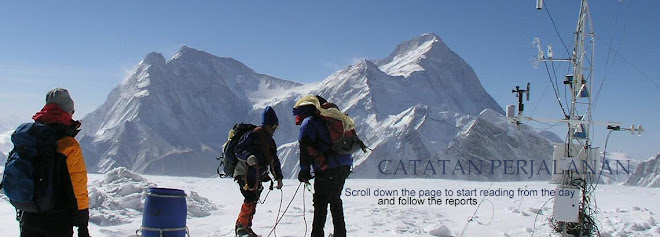






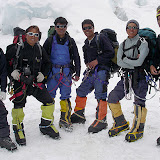
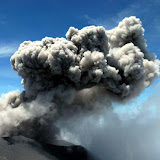
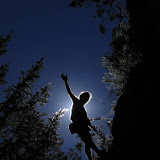
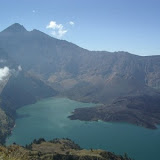





No comments:
Post a Comment